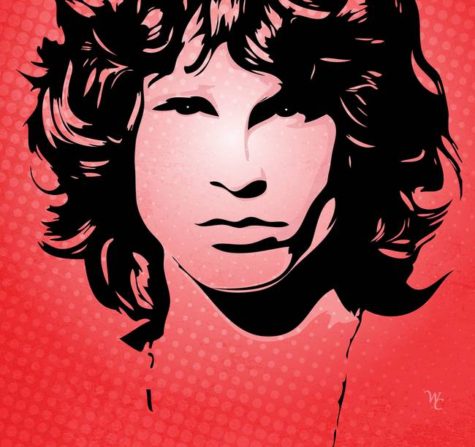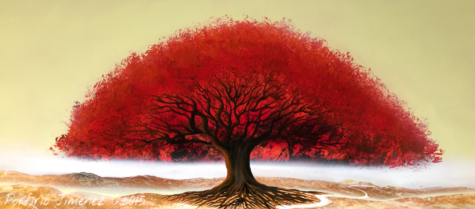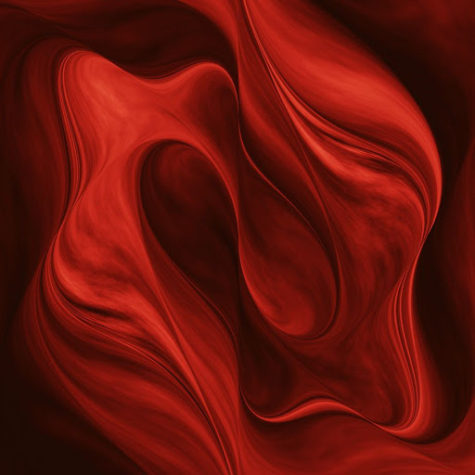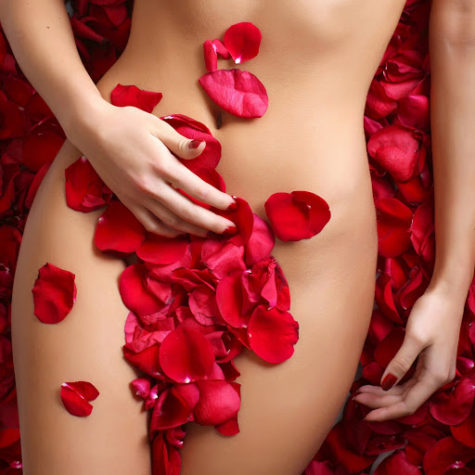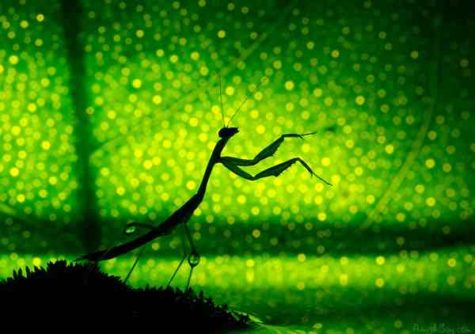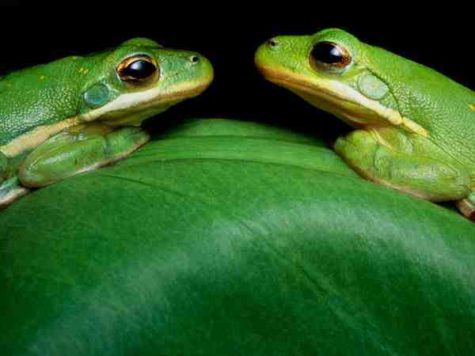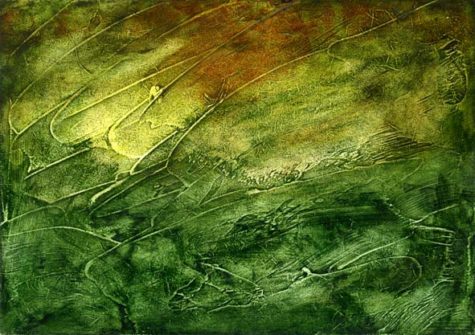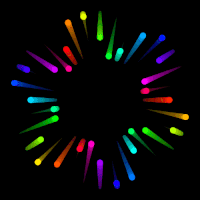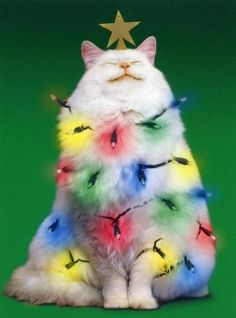Individual Colors
Feeling Red
Phrases like “red light district” and “scarlet woman” aptly describe the sexual nature of red. Some aspects of red behavior are not socially acceptable. Red together with black is associated with evil, for example in the archetypal “red devil” of medieval artists.
Blatant expression of emotion is not always easy to handle, whether it is sexuality, passion, anger or aggression. When expressing red emotions, the heart beats faster, the capillaries dilate and the skin becomes flushed and feels warm.
Red is thought of as an immediate color. This affects the thinking processes, causing restlessness and impatience. Red can result in very selfish behavior, a focus on personal needs and survival above everything else.
Sometimes the drive to survive is what fuels impulsive actions and rash comments. When these traits are managed well they create capable business people who are innovators and entrepreneurs, preferring to move from one project to another, getting an operation on its feet then moving on. They are gifted with being able to manifest new ideas. Often people with red traits are also renowned for their daring exploits, and they can be somewhat extroverted and boastful about their skills.
Red brings focus to the physicality of life, to the process of living. The color is symbolic of what we need to survive. Life should be grabbed and lived with a sense of immediacy. Without red we become listless and out of touch with reality and we fail to live our dreams in this world. Without the foundation that red gives us we just daydream of escaping into fantasy worlds.
Source unknown
Astronauts Wear Orange
NASA wasn’t trying to make a fashion statement when it picked bright orange for the spacesuits astronauts wear when they launch and land on the space shuttle.
In fact, that bright hue called International Orange was chosen for safety, because it stands out so well against a landscape.
“It’s highly visible for search and rescue,” said Brian Daniel, shuttle crew escape subsystem manager at NASA’s Johnson Space Center in Houston. “It’s one of the most visible colors, especially for sea rescue.”
The same shade of orange coats San Francisco’s Golden Gate Bridge and Japan’s 1,090-foot (333-meter) tall Tokyo Tower.
The shuttle ascent and entry suit, called the Advanced Crew Escape Suit (ACES), is a pressurized shell designed to help an astronaut survive if an accident occurred during liftoff or landing. The suit contains a supply of air and water, along with a parachute and survival gear such as radios, flares and medicine.
The current version of the suit was adopted in 1994, though the previous version, called the Launch Entry Suit (LES), was the same color. [Graphic: Cosmic Apparel Over the Years]
Before the space shuttle, U.S. astronauts wore white or silver suits.
And today’s NASA astronauts wear a completely different suit for spacewalks, or extravehicular activities (EVAs). These suits are designed for a different purpose survival in the near-vacuum of space, rather than survival on Earth.
Thus EVA suits are white, which reflects the strong heat of the sun and stands out against the black expanse of space. These suits are called Extravehicular Mobility Units (EMUs), and are even bulkier than the ACES. They include temperature control, breathable air and drinkable water, and a tough shell to prevent small pieces of space junk, called micrometeoroids, from harming the astronauts.
Russia has its own spacesuits the Sokol suit for launch and landing, and the Orlan suit for spacewalks for those flying aboard Soyuz spacecraft. Both of these suits are white, and function similarly to their U.S. counterparts, with some differences.
China the third nation to independently launch humans into space has its own custom-designed spacesuits for spacewalking called Feitian suits, modeled on Orlan suits. Chinese astronauts have worn suits that closely resemble Sokol suits for launch and landing.
Color Matters More Than You Realize
Before snuggling up to a warm fire with a hot cup of cocoa this winter, you may want to take a second look at the cup holding the chocolate. The warm beverage may taste more flavorful in an orange cup or cream-colored cup, a new study suggests.
The results add to past work showing how factors that have nothing to do with food preparation can affect the taste of food.
“The color of the container where food and drink are served can enhance some attributes like taste and aroma,” said study co-author Betina Piqueras-Fiszman, a researcher at the Universitat Politècnica de València in Spain and the University of Oxford in the United Kingdom, in a statement.
In general, how people perceive taste is influenced by many factors unrelated to the actual food. Past studies have shown that the color of the plate, the price on a bottle of wine, and the verbal description of food can affect people’s enjoyment of dishes and drinks alike.
To see how hot chocolate enjoyment was affected by cup color, Piqueras-Fiszman and her colleagues asked 57 participants to rate samples of the same delicious beverage in four colors of plastic cup: white, cream, orange and red. (All cups were white on the inside.)
The participants said the drink was more flavorful when served in a cream- or orange-colored cup. Interestingly, participants rated the orange- and cream-colored cups of cocoa tastier despite the fact that participants didn’t say there were any significant differences in sweetness or aroma between the colored cups.
The new results may help restaurant owners and Martha Stewart types serve cocoa in a cup that maximizes the enjoyment of the hot drink.
The findings were published in the October issue of the Journal of Sensory Studies.
Why Red Is Such A Potent Color
Why is the color red so impressive? The answer lies in our tree-living past.
In the back of the vertebrate eyeball are two kinds of cells called rods and cones that respond to light. Cones take in a wide range of light, which means they recognize colors, and they are stimulated best during daylight. Rods respond to a narrower range of light (meaning only white light) but notice that light from far away and at night.
Isaac Newton was the first person to hold up a prism and refract white light into a rainbow of colors and realize that their might be variation in what the eye can see. Color comes at us in electromagnetic waves. When the wavelength of light is short we perceive purple or blue. Medium wavelengths of lights tickle the cones in an other way and we think green. Short light wavelengths make those cones stand up and dance as bright spots of yellow, orange and red.
Various animals distinguish only parts of that rainbow because their cones respond in different ways. Butterflies, for example, see into the ultraviolet end of the rainbow which allows them to see their own complex markings better than we can. Foxes and owls are basically color blind and it doesn’t matter because they are awake at night when the light spectrum is limited anyway.
Humans are lucky enough to be primates, animals with decent color vision, and we can thank monkeys for this special ability.
Long ago, primitive primates that resemble today’s lemurs and lorises saw only green and blue, the longer wavelengths of color. But when moneys evolved, around 34 million years ago, their cones became sensitive to even shorter wavelengths of color and they saw red.
And what a difference. With red, the forest comes alive. Instead of a blanket of bluish-green leaves, the world is suddenly accented with ripe red, yellow, and orange fruits, and even the leaves look different.
For a monkey leaping through the forest canopy, color vision would be an essential advantage. Unripe fruit doesn’t have enough carbs to sustain a hungry primate and they taste really sour. Unripe leaves not only taste bad, they are toxic and indigestible.
For the first humans foraging about the forest and savannah around 5 million years ago, it would have been be much more efficient to spot a ripe fruit or tuber than bite into a zillion just to get the right one. And so humans ended up with color vision even though we no longer live in trees.
But color is more than wavelengths, more than an indicator of ripeness, to us. Color has become symbolic, meaning it has meaning, and that meaning is highly cultural.
Chinese athletes and Chinese brides wear red because red is considered lucky. The U.S. athletes also wear red because that bright color is in the U.S. flag, and because designers of athletic wear, as well as scientists, know that red gets you noticed.
Living Red
Instinctively, the occurrence of red makes us wary, as we connect it with heat and the potential danger of burning. Red lights are built into artificial fires to help simulate the coziness of a real fire. Too much heat and red burns, but at the right level it supports our lives and gives us comfort.
Being the color of blood, red has symbolic links with living and life. Spilling or losing blood brings illness and death. Wearing red, eating red foods and surrounding yourself with red increases the body’s ability to absorb iron, the metal that is responsible for the color of hemoglobin in the blood. The presence of hemoglobin allows the blood to absorb oxygen in the lungs and to transport that life-giving oxygen to the cells of the body.
Physical activity and the energy that that supports it also has a red vibration. If speed, danger, daring or courage are involved, the red quality of the activity increases. Mountaineers, racing car drivers, and stuntmen all have “red” careers.
Source unknown
Red – What is it?
Red is any of a number of similar colors evoked by light consisting predominantly of the longest wavelengths of light discernible by the human eye, in the wavelength range of roughly 625-740 nm. Longer wavelengths than this are called infrared, or below red and cannot be seen by the naked human eye. Red is used as one of the additive primary colors of light, complementary to cyan, in RGB color systems. Red is also one of the subtractive primary colors of RYB color space but not CMYK color space.
Red’s wavelength has been an important factor in laser technologies as red lasers, used in early compact disc technologies, are being replaced by blue lasers, as red’s longer wavelength causes the laser’s recordings to take up more space on the disc than blue lasers.[10] Red light is also used to preserve night vision in low-light or night-time situations, as the rod cells in the human eye aren’t sensitive to red. Red is used as one of the additive primary colors of light, complementary to cyan, in RGB color systems. Red is also one of the subtractive primary colors of RYB color space but not CMYK color space.
One common use of red as an additive primary color is in the RGB color model. Because “red” is not by itself standardized, color mixtures based on red are not exact specifications of color either. In order to produce exact colors the color red needs to be defined in terms of an absolute color space such as sRGB. As used in computer monitors and television screens, red is very variable, but some systems may apply color correction (so that a standardized “red” is produced that is not in fact full intensity of only the red colorant).
A red filter used in black and white photography increases contrast in most scenes. For example, combined with a polarizer, it can turn the sky black. Films simulating the effects of infrared film (such as Ilford’s SFX 200) do so by being much more sensitive to red than to other colors. Red illumination was (and sometimes still is) used as a “safelight” while working in a darkroom, as it does not expose most photographic paper and some films. Though many more modern darkrooms use an amber safelight, red illumination is closely associated with the darkroom in the public mind.
Source” I’m not sure where I found this information.
Red On Women Drives Men Wild
Red may be the color of love for a reason: It makes men feel more amorous towards women, a new study reports.
From ancient rituals to those red paper lace hearts on Valentines, red has been tied to carnal passions and romance in many cultures over the course of history.
In five psychological experiments, University of Rochester psychologists tested how different colors affected men’s attitudes towards women.
In one experiment, test subjects were shown a picture of a woman that was framed by either a red or white border and asked to answer a series of questions, such as: “How pretty do you think this person is?” Other experiments contrasted red with gray, green or blue (keeping saturation and brightness levels the same between the different hues).
In the final study, the shirt of the woman in the photo was digitally colored red or blue. In this experiment, men were questioned not only about their attraction to the woman, but about how they would plan a hypothetical date with her. For example, one question asked: “Imagine that you are going on a date with this person and have $100 in your wallet. How much would you be willing to spend on your date?”
In all the experiments, women shown framed by or wearing red were rated significantly more attractive and sexually desirable by men than the exact same women shown with other colors.
When wearing red, women were also more likely to be treated to a more expensive outing.
“It’s fascinating to find that something as ubiquitous as color can be having an effect on our behavior without our awareness,” said study team member Andrew Elliot.
The study, detailed in the Oct. 28 online edition of the Journal of Personality and Social Psychology, is said to be the first to scientifically document the effects of color on behavior in relationships.
Elliot and his co-author Daniela Niesta said the effect could be due to societal conditioning, though they attribute it to deeper biological roots because nonhuman male primates, such as baboons and chimpanzees, are known to be attracted to females displaying red.
The red effect applied only to males and only to their perceptions of attractiveness; it did not change their ratings of the pictured women in terms of likability, intelligence or kindness.
Other research suggests that the effect of color depends on the context. In a previous study, Elliot and his colleagues showed that seeing red in competitive situations, such as sporting events, leads to worse performance. Another recent study suggests that referees favor red-clad competitors because of a subconscious bias for the color.
Green – In Depth
When students were given creativity tests, those whose test-cover pages had a green background gave more creative answers than those whose pages were white, blue, red or grey. ~Sue Shellenbarger
Since the beginning of time, green has signified growth, rebirth, and fertility. In pagan times, there was the “Green Man” – a symbol of fertility. In Muslim countries, it is a holy color and in Ireland, a lucky color. It was the color of the heavens in the Ming Dynasty.
The word green comes from the Middle English and Old English word grene, which, like the German word grün, has the same root as the words grass and grow.
It is from a Common Germanic *gronja-, which is also reflected in Old Norse grænn, Old High German gruoni (but unattested in East Germanic), ultimately from a PIE root *ghre– “to grow”, and root-cognate with grass and to grow.
The first recorded use of the word as a color term in Old English dates to ca. AD 700.
Latin with viridis (and hence the Romance languages, and English vert, verdure etc.) also has a genuine term for “green”. Likewise the Slavic languages with zelenъ. Ancient Greek also had a term for yellowish, pale green – χλωρός, chloros (cf. the color of chlorine), cognate with χλοερός “verdant” and χλόη “the green of new growth”.
For the ancient Egyptians, green had very positive associations. The hieroglyph for green represented a growing papyrus sprout, showing the close connection between green, vegetation, vigor and growth.
In wall paintings, the ruler of the underworld, Osiris, was typically portrayed with a green face, because green was the symbol of good health and rebirth.
Palettes of green facial makeup, made with malachite, were found in tombs. It was worn by both the living and dead, particularly around the eyes, to protect them from evil. Tombs also often contained small green amulets in the shape of scarab beetles made of malachite, which would protect and give vigor to the deceased.
It also symbolized the sea, which was called the “Very Green. Interestingly, in Japan, the words for blue and green (“ao“) are the same.
Today, green is no longer just a color. It’s now the symbol of ecology and a verb. Today’s greens can be found in a wide range of objects: pea soup, delicate celadon glazes, sleazy shag carpet, sickly bathroom walls, emeralds, wasabi, and sage. The English language reflects some strange attributes: Would you rather be green with envy, green behind the ears, or green around the gills? (Idiomatic American English for extremely envious, immature or nauseated.)
Green in other cultures:
Green is usually considered lucky. A green shamrock symbolizes this. However, this is not always true in every culture, venue, or situation. For example:
- You won’t find many green cars at racetracks because they are considered unlucky.
- Circus and traveling showmen in Australia may consider green to be bad luck.
- An old English rhyme about wedding colors: “Married in green, Ashamed to be seen.”
- In China, Green may symbolize infidelity. A green hat symbolizes that a man’s wife is cheating on him.
- In Israel, green may symbolize bad news.
- In Spain, racy jokes are “green.”
Seeing Green:
There are more shades of green than that of any other color. Greens range from yellow-greens, such as lime and avocado greens, to those with a blue tinge (such as emerald). Aqua or turquoise are colors that are typically half green and half blue.
Color Blindness – Approximately 5% – 8% of men and 0.5% of women of the world are born colorblind. People who are protans (red weak) and deutans (green weak) comprise 99% of this group.
Some European countries have outlined certain traffic light colors so that it is clear which is green and which is red, by the color that has a rectangle around it. Some states in the U.S. have placed diagonal lines through green traffic lights as an aid for the colorblind.
Green exit signs have an important advantage when there is smoke in the air (in other words, when a fire is burning). With red exit signs, it looks like a fire – firemen have actually rushed into burning buildings and tried to put out the signs! With a green sign, people know it isn’t the fire itself but the way to safety.
 Spectral coordinates:
Spectral coordinates:
- Wavelength: 520-570 nm
- Frequency: 575-525 THz
Color coordinates:
- Hex triplet: 00FF00
- sRGBB: (0, 255, 0)
Using Green
He had that curious love of green, which in individuals is always the sign of a subtle artistic temperament, and in nations is said to denote a laxity, if not a decadence of morals. ~ Oscar Wilde
Put green in your life when there is:
- A feeling of restriction caused by circumstances such as being housebound or confined.
- A need to let change happen, but also a fear of the unknown.
- A feeling of being trapped by other people’s rules and regulations and a need to break rigid patterns.
- A need for new ideas.
- A need for a new state of balance.
- A problem with personal relationships, especially with over-dominance and subservience.
- Green balances the emotions, calms, soothes nervous exhaustion, (use in moderation).
- Feng Shui claims that green eases absent-mindedness, nervousness and rudeness.
Loving green:
Green is a nice-person color, a “do-gooder, be-gooder” kind of color. This person has a warm heart. Passion is probably in there somewhere, buried under integrity and honor. If you love green, you put the greater good before your own good – try a little selfish behavior once in a while.
Green brings peace, rest, hope, comfort and nurturing, calmness and harmony. Interest in nature, plants, fellowmen, children and animals, health and healing, natural and plain life. Longing for a safe home and family-life. A dislike
of conflicts.
Not loving green:
A person who has an aversion to green may be more interested in independence and self-development than in a warm family-life. May prefer to keep a certain distance in (sexual) relationships.
Wearing green:
Wear green when you want to overcome a sense of thwarted ambition. Green says growth – balance – harmony. It is a color of healthy relationships.
Questions to ask yourself when drawn to green:
- Is there a need for space to gain fresh perspective?
- What is restricting you?
- Is there a situation or circumstance that is limiting or stopping your growth?
Note: This post was compiled by Shirley Twofeathers for Color Therapy, you may repost and share without karmic repercussions, but only if you give me credit and a link back to this website. Blessed be.
Variations of The Color Green
They’ll sell you thousands of greens. Veronese green and emerald green and cadmium green and any sort of green you like, but that particular green, never. ~Pablo Picasso
Olive green: speaks of new beginnings, hope and peace. It is the traditional color of peace, “offering an olive branch.” There is, however, an element in this color that suggests treachery and deceit, blaming others for its problems..
Light green: This is a soul spirit color that arouses a heightened awareness of our finer nature, our pure goodness, generosity, attuning to our goodness on the outside. Light green takes us deeper within ourselves showing us the perfection and light that we have always been and always will be. We discover that we are fine just the way we are!
Lime Green: Lime green inspires youthfulness, naivety and playfulness; it is liked the most by younger people. It creates a feeling of anticipation, and helps clear the mind of negativity.
Dark Green: There is a degree of resentment in dark green. Often used by wealthy businessmen, ambitious and always striving for more wealth, dark green signifies greed and selfish desire. “Green with envy” is the recognition of this. “Green around the gills” is another expression indicating an upset condition, an approaching illness, the result of fear, or a case of biliousness.
Pale green: As the color of new growth on plants, it indicates immaturity, youthfulness and inexperience. It allows us to see things from a new perspective, to make a fresh start
Emerald green: This is an inspiring and uplifting color suggesting abundance and wealth in all its forms, from material wellbeing, to creative ideas.
Jade green: The color of trust and confidentiality, tact and diplomacy, jade green indicates a generosity of spirit, giving without expecting anything in return. It increases worldly wisdom and understanding, assisting in the search for enlightenment.
Aqua: Aqua calms the spirit, offering protection and healing for the emotions.
Yellow green: This color green suggests cowardice, conflict and fear.
Grass green: Grass green is the color of money. It is self-confident and secure, natural and healthy, occurring in abundance in nature.
Note: This post was compiled by Shirley Twofeathers for Color Therapy, you may repost and share without karmic repercussions, but only if you give me credit and a link back to this website. Bright Blessings.
